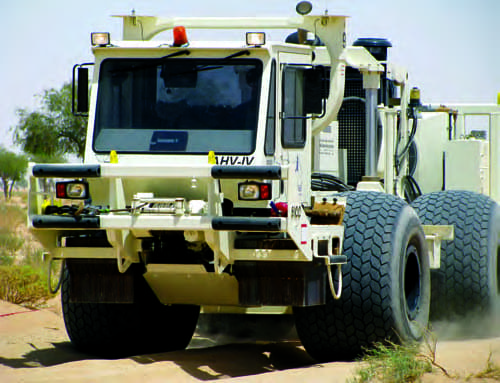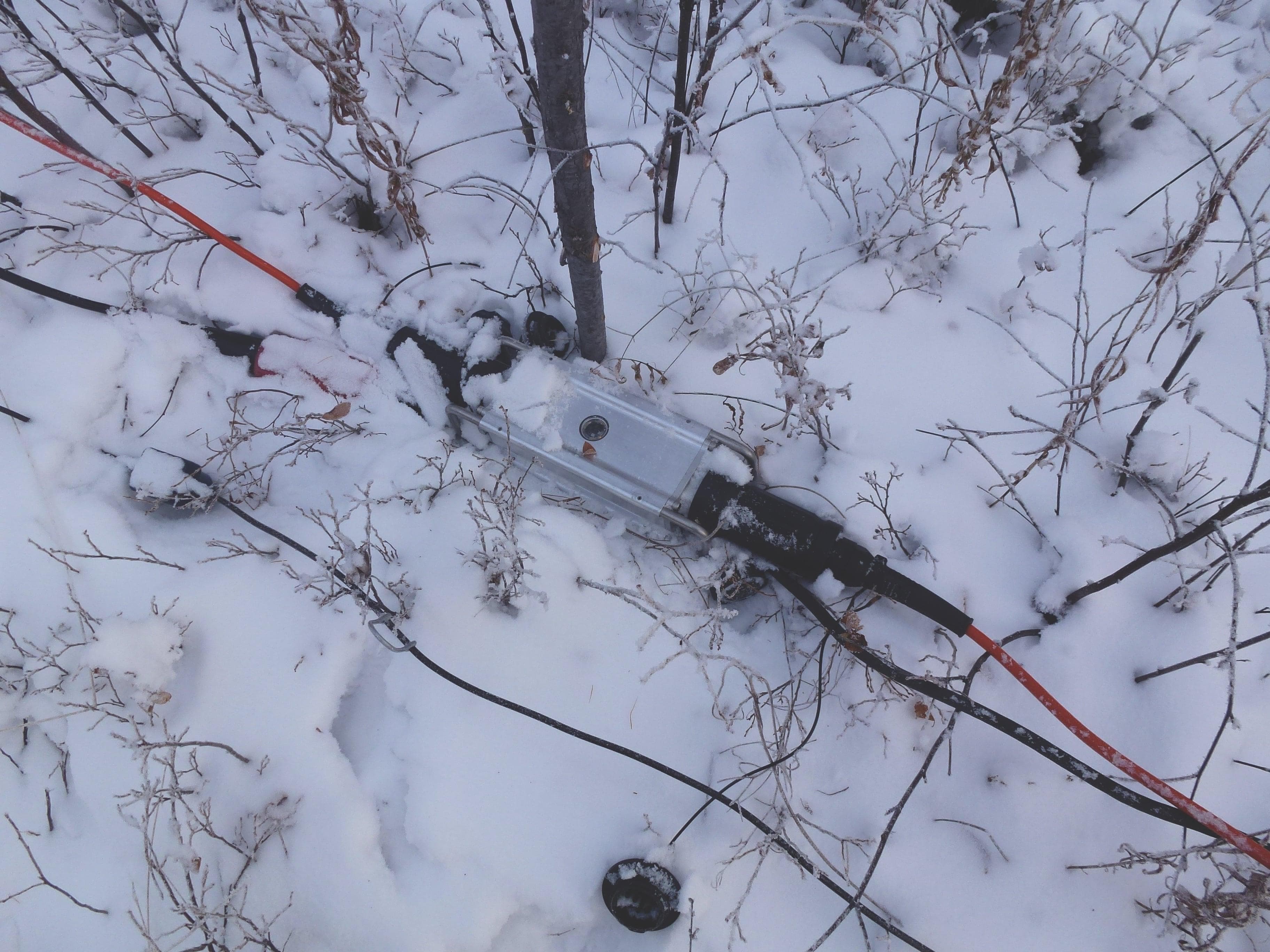
Global - Renegade
Optimizing Productivity for High-Density Acquisitions
In December 2007, Global Geophysical Services, a geophysical service provider operating twelve land survey crews worldwide, began a five-month, 3D data acquisition in Oman. The acquisition specified an advanced vibroseis recording methodology covering approximately 2,793 sq km of relatively flat desert terrain for characterization of a target approximately 6,000 meters below the surface. With aggressive daily productivity parameters and simultaneously recorded offset separated shot points required by the E&P operator, Global sought a highly reliable vibroseis vehicle with faster acceleration that would provide greater energy input while minimizing the logistical quandary of mobilizing and coordinating multiple vibs per fleet.
| Segment | Land Seismic Acquisition |
|---|---|
| Region | Khazzan Makarem Block, Oman |
| Technologies | |
| Related Products | AHV-IV™ Vibrators |

The Challenge
In December 2007, Global Geophysical Services, a geophysical service provider operating twelve land survey crews worldwide, began a five-month, 3D data acquisition in Oman. The acquisition specified an advanced vibroseis recording methodology covering approximately 2,793 sq km of relatively flat desert terrain for characterization of a target approximately 6,000 meters below the surface. With aggressive daily productivity parameters and simultaneously recorded offset separated shot points required by the E&P operator, Global sought a highly reliable vibroseis vehicle with faster acceleration that would provide greater energy input while minimizing the logistical quandary of mobilizing and coordinating multiple vibs per fleet.
The challenge with a survey of this magnitude is managing, maintaining and coordinating the sheer volume of vibrators required to meet the high-productivity structure of the acquisition. In addition, wear-and-tear on vibrators utilized in twenty-four hour continuous recording environments can hamper production and greatly diminish uptime if maintenance and repairs are difficult or complicated to address in the field.
“The AHV-IV Renegade was critical to the success of the acquisition because it afforded the opportunity to accommodate the demanding continuous recording environment with single source operations. With a large number of vibrators to manage, our productivity will be highly correlated with the reliability of the units.”
Tom Fleure - Sr. Vice President, Geophysical Technology Global Geophysical Services

The Solution
To accommodate the high-productivity survey parameters, Global’s Oman Crew 663 commissioned 17 AHV-IV Renegades (15 in operation with 2 spares), INOVA’s 80,000 pound peak force vibrators with interchangeable tires and tracks. Operating the Renegades in unison in a single-source fleet configuration with 50 meter VP spacing intervals, and 100 meter spacing between source lines, the acquisition covered approximately 42,000 km of vibrator track distance - an average of 280 km a day with a 610 km-day maximum.
In peak production, Global achieved weekly production rates of 50,000 VPs. With a total of 842,324 VPs recorded over the 151-day duration, Global was able to maintain 95% vibrator uptime in a continuous recording environment with virtually twenty-four hour a day operations. Vibrator uptime and fleet mobility were critical factors for the success of the Oman acquisition.

Global provided higher productivity operations and faster move-up times between VPs with a record day of 12,200 VPs recorded.

The Results
Global Geophysical Services optimized uptime and productivity by utilizing the AHV-IV Renegade which maintained exceptional field performance during the five-month acquisition. With the ability to deliver increased ground force in a 6-second sweep (a 32 second cycle time) from the 80,000 pound Renegade, Global provided higher productivity operations and faster move-up times between VPs with a record day of 12,200 VPs recorded.
Utilizing the same number of vibs and identical configuration with 60,000 pound vibrators, an operator would have to increase the sweep length by 77% to maintain the same signal to noise ratio, an additional 4.7 seconds in cycle time. The increase in cycle time dramatically impacts field productivity. Operating in a continuous recording environment and accommodating the grueling pace requires technology that is durable and field-reliable. With astounding ease, the AHV-IV Renegade maintained consistent performance levels throughout the high-density survey, and proved to be a cost-effective resource with minimal downtime and maintenance on the 3D acquisition.
